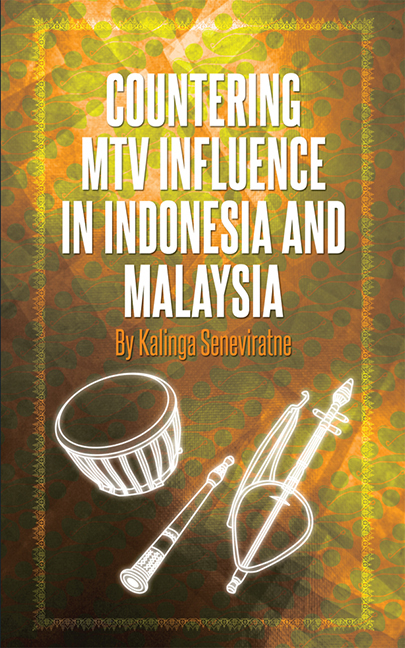Book contents
- Frontmatter
- Contents
- Preface
- 1 Introduction
- 2 Malay Cultural Landscape and Identity: Malaysia and Indonesia
- 3 Music, Islam, and Modern Cultural Identities
- 4 Pop Music, Cultural Imperialism, and Localization
- 5 Case Studies
- 6 Countering Cultural Imperialism: Theoretical Analysis
- References
- Index
- About the Author
- Frontmatter
- Contents
- Preface
- 1 Introduction
- 2 Malay Cultural Landscape and Identity: Malaysia and Indonesia
- 3 Music, Islam, and Modern Cultural Identities
- 4 Pop Music, Cultural Imperialism, and Localization
- 5 Case Studies
- 6 Countering Cultural Imperialism: Theoretical Analysis
- References
- Index
- About the Author
Summary
Two theoretical perspectives related to international communication (i.e., cultural imperialism and cultural identity) reflect the battle between the forces of globalization and local cultural identity taking place all over the world. In the last decade, Indonesia and Malaysia, two predominantly Islamic countries in Southeast Asia, have opened their doors to forces of cultural flows and globalization, especially to the intermediary global media. People in both societies are seeking to come to terms with new cultural identities embracing modern media technologies while at the same time wanting to preserve their liberal Islamic culture. This book sets out to investigate and discuss the multilayered “postmodern” cultural identities that are being negotiated, particularly as these new identities relate to adaptation of the use of new media technologies and media forms to the needs of local culture and religion.
The study did not try to look at how Western culture is rejected or resisted by Indonesian and Malaysian youth. Rather it looked at how certain aspects of the Music Television (MTV) formula — mainly the technical aspects of presentation and formatting — could be appropriated and refashioned so that the cultural output of the local product does not reflect a Western cultural expression but a Malaysian or Indonesian cultural expression rebranded to look contemporary/modern, without losing the local cultural flavour. Thus, the study examines how aspects of MTV create new cultural identities rooted in the traditional culture but refashioned and reinterpreted for local relevance and consumption, so that youth would see it as an expression of their “modern” identity.
Choice of Topic
As a teenager growing up in Sri Lanka in the 1970s I was widely exposed to a genre of music called baila. Drawing on Sri Lankan drumming, Portuguese folk music rhythms, and Sinhalese lyrics, this music was very popular, especially with the urban youth of the time. However, the lovers of Sinhalese traditional and classical music saw the baila as thupai (corrupted) music, as belonging neither to the Eastern nor to the Western musical traditions.
- Type
- Chapter
- Information
- Countering MTV Influence in Indonesia and Malaysia , pp. vii - xxiiiPublisher: ISEAS–Yusof Ishak InstitutePrint publication year: 2012



